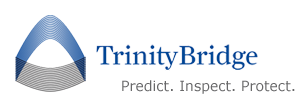Leveraging Project Experience – MI/RBI/APM/ERP Integration and Switching Platforms
By Michael Warren
Trinity Bridge has the privilege of working with a very diverse global client base. We help our partners develop, improve and manage their data in a wide variety of databases and formats. We recently completed the initial phase of a project that highlights the complexity of the endeavor and emphasizes how Trinity Bridge was able to help them accomplish and exceed their goals, ahead of schedule.
The client has multiple locations, combined up, mid and downstream that have implemented various MI/RBI solutions to facilitate their Mechanical Integrity programs. Corporately they are in the process of evaluating software options that would allow them to move all their sites onto a common enterprise solution. Trinity Bridge was brought in to assist them in getting data into the proposed platform and provide an unbiased evaluation of the different approaches. Below are a few of the key elements of this project and a summary of why these may be important to you as well.
The objectives of this project were: develop and test the work process of importing data into the new database, facilitate remote demonstrations of an end to end MI (mechanical integrity) workflow, help define user acceptance criteria and finally, support the user acceptance testing by company personnel. Here are four (and not the only four) important aspects to consider when considering a fully integrated MI solution:
Acceptance Criteria – One of the most important first steps in a project like this is to gather information from each site that helps define software functionality required to support your best practice workflow. Trinity Bridge helped this client gather and categorize this information. This step helps define what data needs to be collected and which elements of the prospective solution will be tested by the end users.
Data Importing – The owner operator has sites using various IDMS and RBI tools. Some sites use an integrated IDMS/RBI platform, with RBI a bit more qualitative than the quantitative RBI based on API RP 581. Some sites were using an IDMS program disconnected from the API 581 based RBI. Other sites are using a qualitative and operator configurable RBI solution that is integrated RBI/IDMS. Trinity Bridge was tasked with moving data from each of these systems into a fully integrated ((IDMS/RBI (580 or 581), asset strategy planner) enterprise level, APM solution. As a result, the sites were using a mixture of semi-quantitative and quantitative RBI approaches. This varied approach required the use of two separate DCTs (Data Collection Template) to export, format, condition and import the data into the APM/ERP platform under evaluation.
Product Demo – The data was successfully imported, both semi-quantitative and quantitative solution risks were calculated and inspection planning completed. Multiple demo sessions with the client’s team were conducted to help the users to become more familiar with navigation as well as provide a general understanding of product capabilities. This allowed the users to to perform testing of the acceptance criteria and gauge the level of functionality. The product demo included all of the mechanical integrity program elements within the APM/ERP platform. This included Risk Based Inspection, Inspection Management, Thickness Monitoring, Asset Strategy Management and several other applications that are used by these modules like, Policy Designer, Query Designer, and various Dashboards, in addition.
(UAT) User Acceptance Testing – Another key step to approving a potential solution was doing an in-house UAT. This allows your end users to get early access to the workflow, features and functionality in a new database to ensure that the proposed solution will support the workflow that they prefer to follow. By leveraging Trinity Bridge’s expertise and knowledge to support this effort, the user was able to avoid making a common mistake of using inexperienced people for UAT, that may or may not identify a product deficiency due to inexperience with the software solution.
These are a few major points to cover when considering platform changes, especially when a major, strategic change is considered like moving from more silo’d approaches to a true ERP/APM framework. Please share your experiences. Thanks in advance.

1 Comments
Submitted by robertslsu on Tue, 02/06/2018 - 08:41